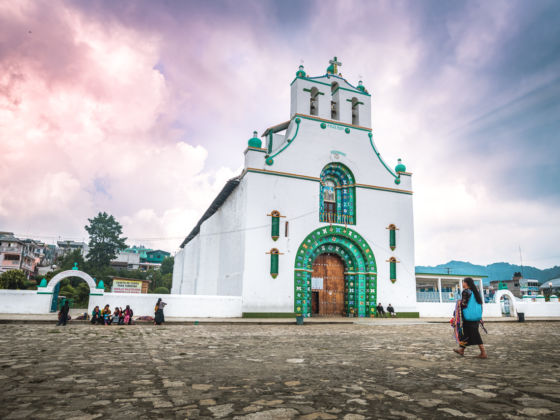You’re not allowed to take pictures inside the San Juan Bautista temple. So, while walking toward it, I hurry to put my camera inside my bag. I am in the middle of doing just that — and thinking about what it will be like to step into that legendary church for the first time — when I realize that I am already in a place unlike anywhere else in Mexico. I suddenly want to take my camera out again to capture the moment, but I think better of it.
The square outside the church is packed with people, and it feels like everyone is staring at me. The women are dressed in fuzzy, traditional Chamula black wool skirts that give them raven-like appearances. There are a few men — some of them wearing a white vest, or chuj — talking amongst themselves. I feel like such an intruder among these people and this place that I barely pay attention to our guide as he briefs us one last time on the proper etiquette before opening the door of the temple.
